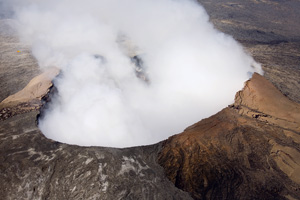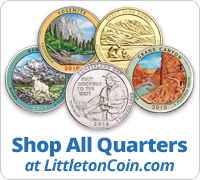
Kilauea Volcano in Hawai’i Volcanoes National Park
Located on the “Big Island” of Hawaii, this national park is home to Mauna Loa, the largest volcano on earth and Kilauea, the world’s most active. These are just 2 of the 5 different volcanoes found on the island of Hawaii, the youngest island in all of the Hawaiian chain. Through the efforts of Lorrin Thurston, the “father” of Hawai’i Volcanoes National Park, this special land became a national park in 1916. It will be featured on the 2012 National Park quarters – as the fourth release of the year.
The park covers 333,000 acres with landscape ranging from sea level and rising nearly 14,000 feet to the top of Mauna Loa. For centuries, native Hawaiians worshipped the volcano goddess, Pele, whom they believed lived in a crater on Kilauea. According to legend, visitors who remove rock (Pele’s children) from the volcano are cursed with bad luck.
Kilauea has been continuously erupting since 1983 and has added over 450 acres of land to the big island. Although this volcano erupts, it isn’t the violent, explosive type, which allows visitors to see an active volcano first hand. Volcanic vents, pit craters, and lava tubes are just a few of the fascinating natural wonders that draw people to the Hawai’i Volcanoes National Park. Thanks to its rich history and landscape, it has been named both an International Biosphere Reserve (in 1980) and a World Heritage Site (in 1987).
More information on Hawai’i Volcanoes National Park.
